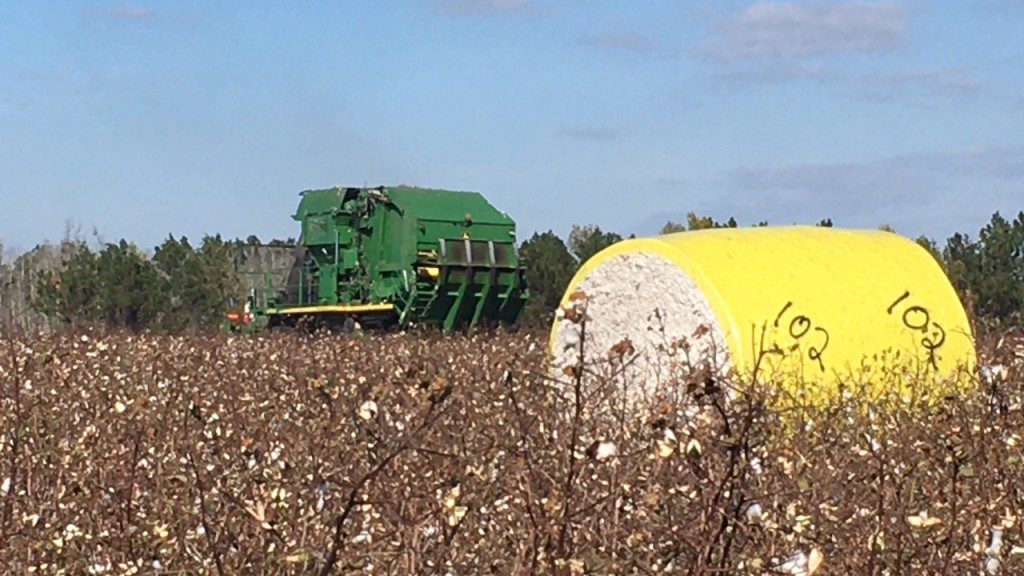Be sure to check out the latest episode of the UGA Peanut Team Podcast.

Drs. Scott Monfort, Mark Abney, Eric Prostko, Scott Tubbs, and Lowndes County Extension Agent Josh Dawson discuss issues growers face as they begin planting. For more information, please reach out to your local agent.
Also, the UGA Cotton Team has released a new episode of their podcast.

Below is a link to Season 2, Episode 9 of the Talkin’ Cotton Podcast discussing early season considerations for 2025.
https://www.buzzsprout.com/2350262/episodes/17042456
The crop weather report is available. https://www.nass.usda.gov/Statistics_by_State/Georgia/Publications/Crop_Progress_and_Condition/2025/SOR-CropProgress-4-28-25.pdf According this weeks survey 6% of the cotton crop and 7% of the peanut crop has been planted in Georgia. The Drought Monitor shows an expansion of abnormally dry conditions this past week compared to the previous week. Scattered showers came through the area on Sunday night. Rainfall totals ranged from 0 to 0.7 inches.
Pecan Nut Casebearer (PNC). Last week we place a couple casebearer traps in area orchards around Colquitt County. We started seeing activity the last part of the week in a smart trap provided by FMC. According to Dr. Apurba Barman, UGA Pecan Entomologist, the biofix data for Colquitt County is April 26.
To detect the presence of PNC moths, we put out “traps” baited with pheromone lures. Once these traps capture the moths for two consecutive days (also referred to as biofix date), it indicates that the moths are actively emerging, and the females are expected to start laying eggs near the nutlets. Females live for about a week, but they lay between 50-150 eggs during that time. These eggs will hatch after 4-5 days and the young larvae/caterpillars will feed outside the nutlet before they enter inside after 2-3 days.
Dr. Barman updates pecan growers about the PNC situation in his latest blog post.
https://site.extension.uga.edu/pecan/2025/04/pecan-nut-casebearer-update-for-growing-season-2025/
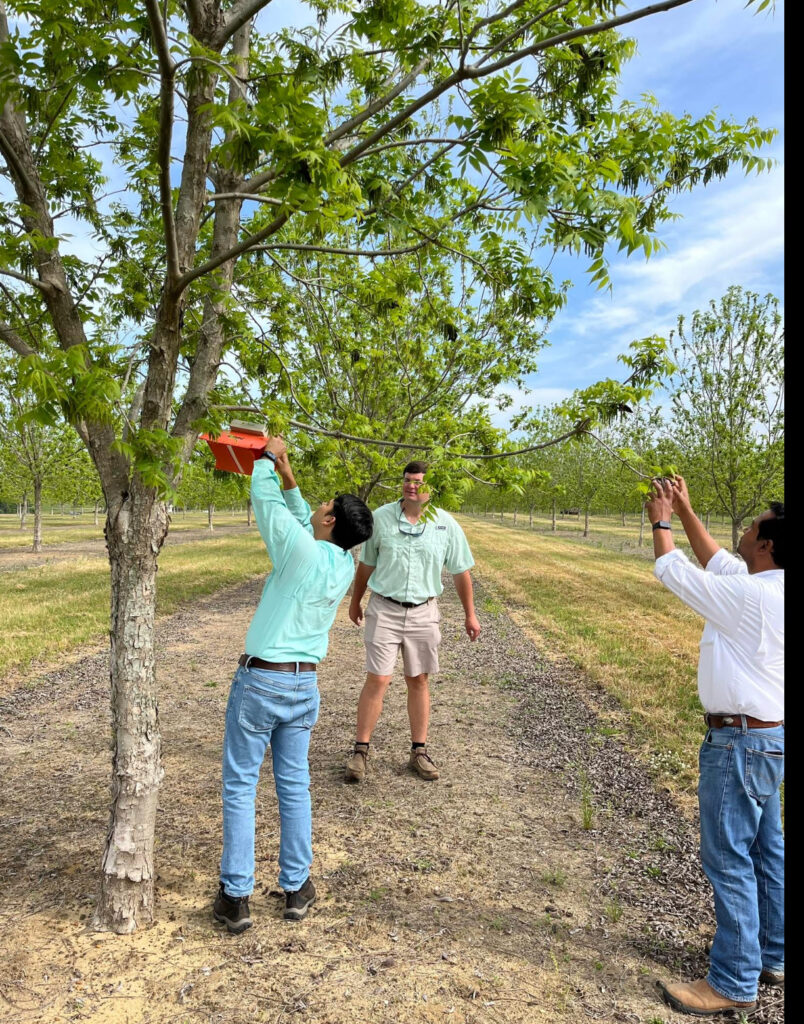
The PNCForecast model will generate dates when 10-90 % of all first-generation pecan nut casebearer PNC eggs are expected to be present in your orchard. To use this tool, you must monitor PNC moth activity with pheromone traps, place traps in your orchard before the first PNC moths are active in the spring and correctly identify PNC moths. For details, see this publication.
When using the model, enter the first date of two consecutive dates when PNC moths were first trapped in your orchard in the spring. Then on the map position the red pin at your orchard location. The correct orchard location and an accurate entry of the date on which you first captured PNC moths are essential to making an accurate forecast for your orchard. Begin scouting for PNC eggs on the dates when 25-50% of the eggs (oviposition) are expected, as shown in the table below.
The table below was generated from the PNC Forecast model using the April 26 biofix date from the trap captures. Growers need to begin scouting for PNC eggs around May 10.
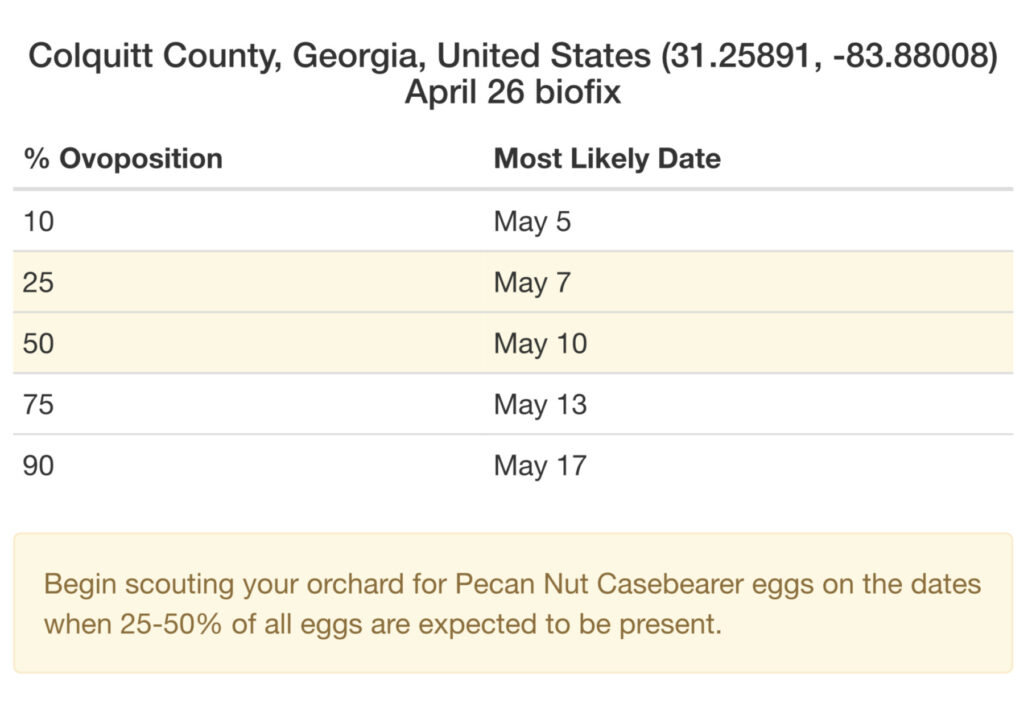
Over the past week I had a question or two about using Liberty. Liberty is the most vulnerable and should not be applied within 1.5 hours of sunrise and 2 hours of sunset. Liberty behaves primarily as a contact herbicide, so good spray coverage is necessary. Ideally, the spray volume is at least 15 gal/A. Ultimately the goal with Liberty is to achieve thorough spray coverage thus growers must understand the relationship of speed, pressure, and nozzle type to achieve this goal. “Dicamba” nozzles may not be satisfactory for Liberty applied alone.
What about controlling volunteer peanuts? This has been the topic of the week. Lets discuss some tactics for controlling this pest in cotton, and corn.
Dr. Culpepper says that we have three options for controlling volunteer peanut in cotton.
1. Roundup + Liberty or Roundup + dicamba are effective; peanut must be larger than a saucer plate for consistent control by Liberty alone.
2. Sequential Roundup applications are almost always needed with the continual emergence of peanut.
3. For residual control, Cotoran + Staple is currently the best option with only fair control.
Dr. Prostko says we have a few options in Roundup Ready, Liberty and conventional corn.
Roundup Ready Corn: Split applications of glyphosate at least 10 days apart. Glyphosate can be applied over-the-top of field corn up to V8 stage or 30″ whichever comes first. Drop nozzles or lay-by applicator should be used when corn is 30″ to 48″ tall.
Liberty-Link Corn: Split applications of Liberty (glufosinate) at least 7 days apart. Liberty can be applied over-the-top up to V6 stage of growth. For corn 24″ to 36″ tall, apply with drop nozzles or lay-by rig.
Conventional Corn: Split applications of dicamba @ 0.25 lb ae/A applied EPOST (8″ tall corn) + lay-by (up to 36″ tall corn). These dicamba applications must be separated by at least 14 days. An alternative treatment would be dicamba (EPOST) followed by Evik (lay-by).
Also I had a question or two about using Liberty before peanut planting. Liberty is helpful to control volunteer peanuts, horseweed, morninglory and small pigweed. The current label indicates a 180 day crop rotation for peanuts. Dr. Prostko has conducted research on peanut tolerance to soil applied applications of glufosinate.
Tropical spiderwort has been emerging in some area corn fields. Group 15 herbicides such as Dual Magnum, Outlook, Warrant, Zidua, and Anthem Maxx have good residual control. 2,4-D, Basagran and Halex GT or Callisto have post emerge activity. If you run the layby in corn then Aim, Evik or paraquat can be used. Please keep in mind that some herbicides can not be applied with Counter insecticide in corn production. We discussed that last week.
The Colquitt County Cattlemens Tour was a huge success last week. There was alot of great discussion about genetics, forages, and herd management. This could not have been possible without the effort of Harry Thompson and other industry partners.
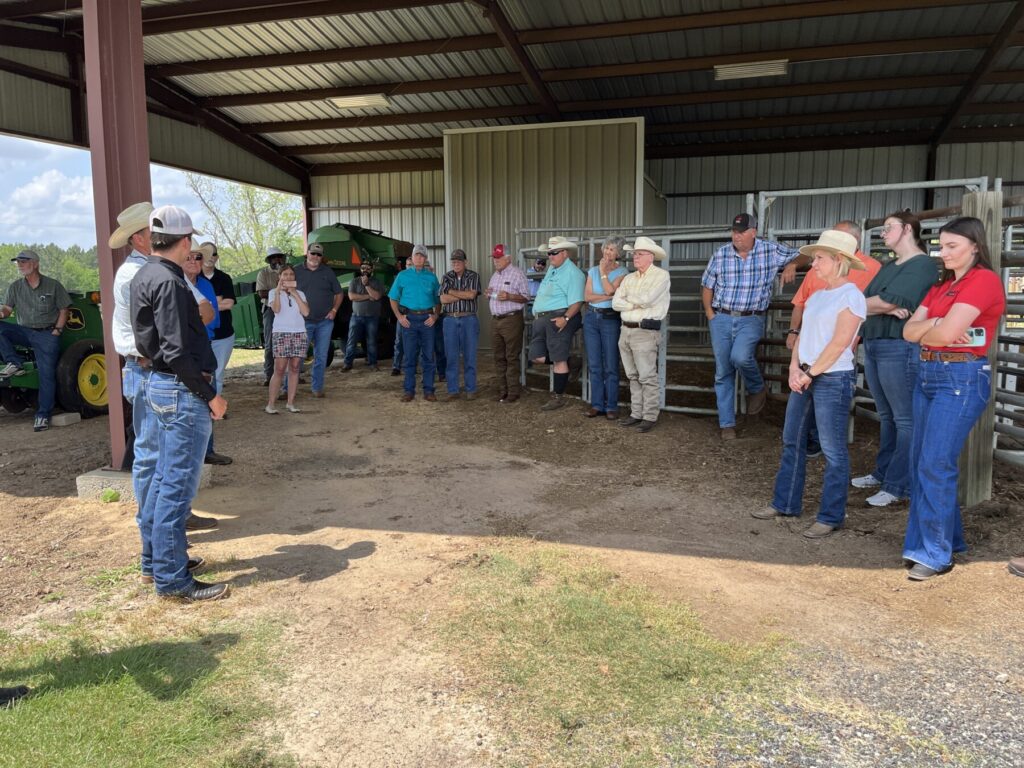
The big bull even showed up at the office the day of the tour.
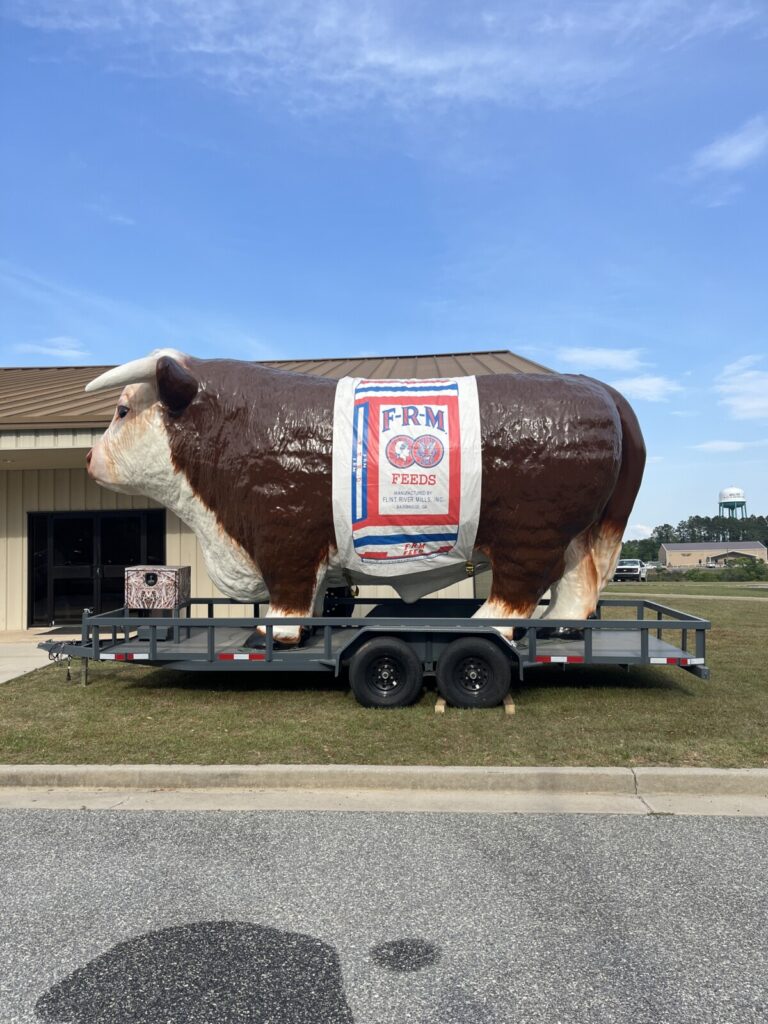
If you have any questions please contact your local county Extension agent.
Have a great week,
Jeremy M. Kichler
Colquitt County Extension Coordinator
The University of Georgia Cooperative Extension does not endorse or guarantee the performance any products mentioned in this update.
